How to ensure effective Suspicious Activity Reporting?
In UAE, Anti-Money Laundering and Combating of Financing of Terrorism (AML/CFT) measures and regulations are critical to identifying potential risks and timely reporting these suspicious activities to ensure the financial stability and security of the economy.
When regulated organizations – whether Financial Institutions, Virtual Asset Service Providers (VASPs), or Designated Non-Financial Businesses and Professions (DNFBPs) – fail to implement the policies and procedures around suspicious activity reporting, the consequences are severe for the organization and the country. The employees must be trained on ML/FT risk indicators, identifying suspicious activities, and appropriately reporting to the Financial Intelligence Unit (FIU).
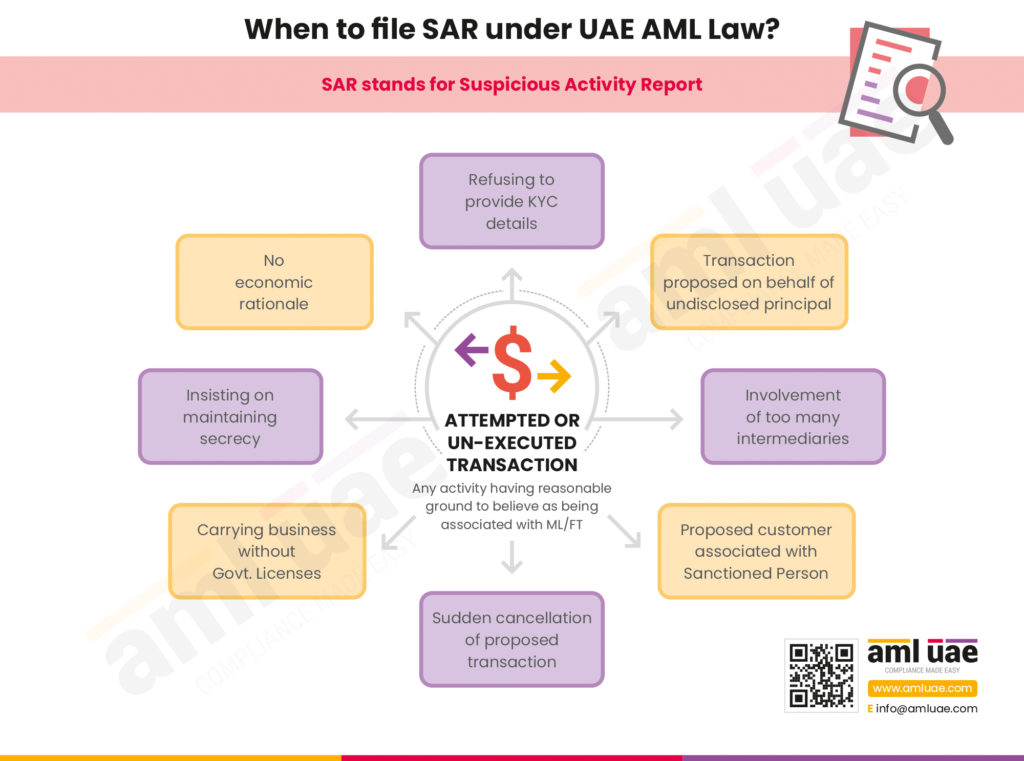
How to identify Suspicious Activity under AML regulations?
Employees engaging with customers and managing the business relationship are vital in identifying suspicious activity. For effective suspicious activity reporting, the employees must understand the red flags and the actions to be taken when such risk indicators are observed.
Once any ML/FT red flags are observed, the employees must collate adequate information about the suspicion and immediately report such suspicious activity to the AML Compliance Officer.
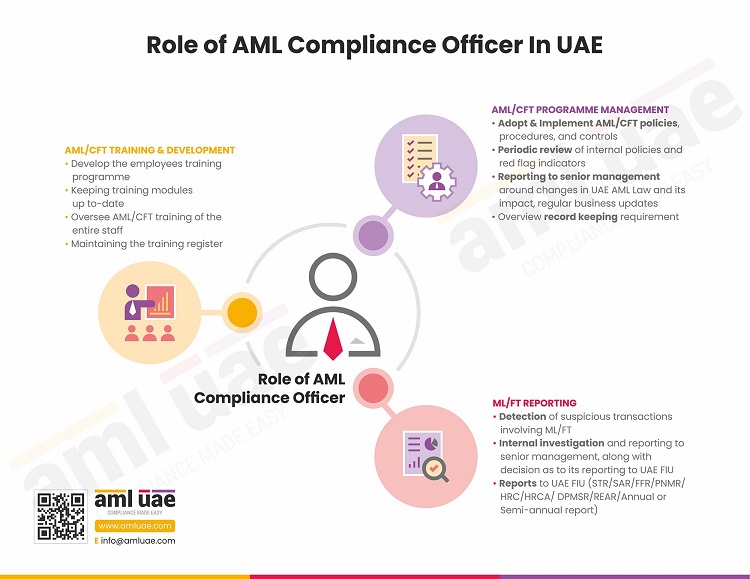
What are the common risk indicators suggesting Suspicious Activity?
Some common indicators of suspicious activity that the employees of the regulated organization must be aware of are:
- Customer suddenly starts making large value transactions, contrary to the transaction history or not matching with the customer’s financial position
- Customer coming from or is closely connected with the high-risk jurisdictions,
- Customer having adverse media or criminal records for being involved in financial crime in past
- Customer refusing to share the identity documents or reluctant to disclose the identity of the beneficial owners
- Customer has no active connection with UAE, or the purpose of the transaction is not clear
- Customer’s legal structure is excessively complex, without any business rationale
- Customer hesitates in sharing information about the beneficial ownership
- Customer engaging in multiple transactions with values exactly below the AML threshold
- Identity document furnished by the customer is found to be fake or forged
- Payment towards the transaction is being initiated from a third-party account not related to the business transaction
- Unnecessary involvement of third-party agents or intermediaries, without any business sense, to conceal the identity of the customer.
The employees must be informed of the red flags suggesting a potential association with money laundering or terrorism financing. Further, employees should be aware of the list of high-risk countries.
Employees must be well-trained to look for unusual patterns of transactions, recognize these risk indicators, and immediately report such suspicious observations to the AML Compliance Officer.
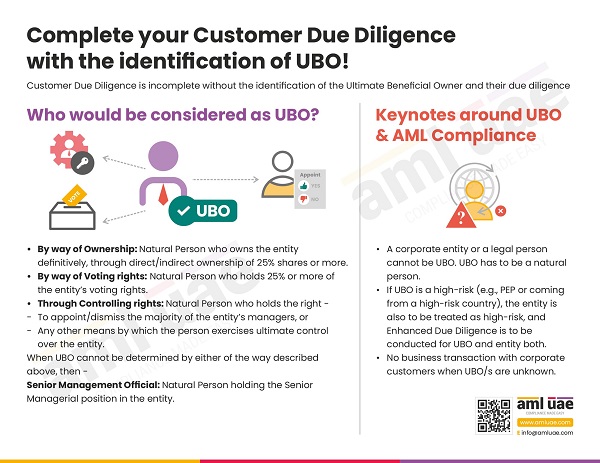
What is the Role of Employees in detecting ML/FT-related Suspicious Activity?
Under the AML Compliance program, employees are considered the first line of defense against money laundering and terrorism financing. Employees play a pivotal role in identifying suspicious activity related to financial crime. Therefore, creating awareness around AML measures and identifying suspicious activities amongst employees is essential.
In addition to identifying suspicious activity, employees should be trained on adequate reporting procedures to ensure accuracy and completeness in internal reporting. This includes knowing when reporting will be done, to whom, and what details will be captured in the report.
Employees should be encouraged to ask relevant questions to determine the nature of the suspicion, including escalating the observed red flags to the departmental head.
Training shall be conducted for the employees covering real-life scenarios and case studies around money laundering or terrorism financing indicators observed by the internal staff and what actions were taken by that employee.

How to establish a robust Suspicious Activity Reporting system?
A strong system must be implemented within the regulated organization for internal reporting of suspicious activities to ensure that suspicions are reported on time and adequately addressed.
Documenting the red flags and risk indicators
For timely reporting of suspicious activity, timely identification of the potential risk indicators is essential. To assist the employees with immediate detection of the ML/FT red flags and evaluate the possibility of suspicion, the organization must include a business-specific list of risk indicators in its policy. These red flags must be well communicated amongst the team, including imparting specific training to create better awareness.
Establishing Clear Reporting Procedures
Clear reporting procedures should be designed and communicated with the relevant employees. This includes policies around who is responsible for reporting, the internal reporting shall be done to whom, how the reporting would be done (through email, physical internal Suspicious Transaction Report (STR) or Suspicious Activity Report (SAR) format, etc.), who should be included in the communication trail, etc.
The details of the AML Compliance Officer, including their contact information, must be available to every employee of the regulated organization.
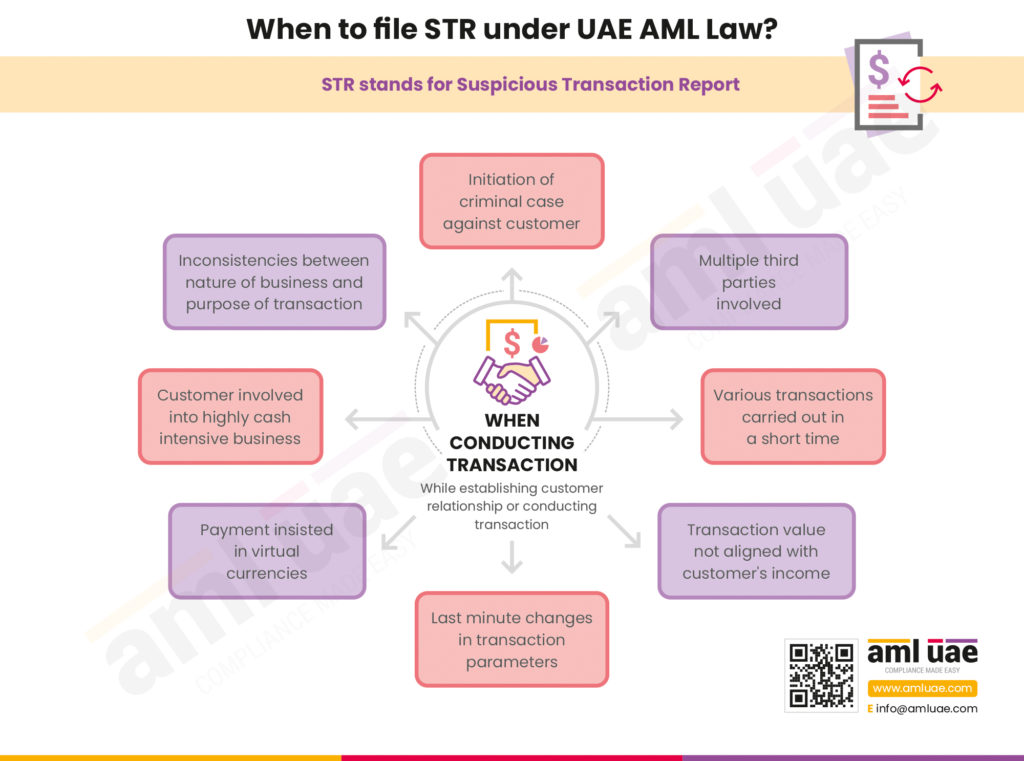
Ensuring Confidentiality and Employee Protection
Employees must feel comfortable reporting suspicious activity without any fear of retaliation. The information of the employee reporting the suspicious activity must be kept confidential. The regulated organization must develop adequate policies to protect employees from retaliation.
No “Tipping off”
The employees must be aware of the requirement not to disclose any information about the identified suspicion to the subject party or any third party, directly or indirectly. The employees should understand that “tipping off” is a criminal offense under UAE AML regulations and attract hefty penal penalties, including imprisonment for such contravention.
Imparting training to the employees
The employees – whether serving clients or managing client relationships – are the first to observe the potential suspicion in transactions or customer behaviour. Also, the back-office teams play a significant role in detecting the red flags while clearing the payments or generating account statements. Thus, all employees of the organization must be imparted adequate training and equipped with the necessary resources to identify the ML/FT suspicion and exercise sound judgment around the necessity to report the same to the Compliance Officer.
Imparting adequate employee training on identifying and reporting suspicious activity is very important to promote a compliance culture in the organization and receive the required contribution from the employee to prevent financial crime.
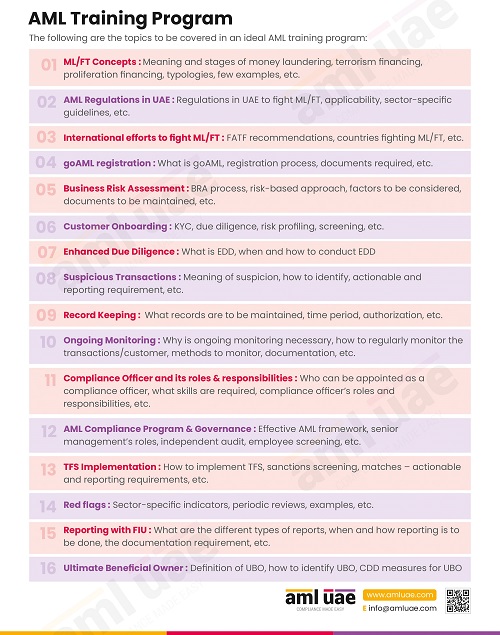
Periodically Reviewing and Updating the Suspicious Activity Reporting System
The regulated organization should regularly review the internal suspicious activity reporting procedures and system to check its effectiveness and update, if necessary, to stay compliant with UAE AML regulations.
What are suspicious activity reporting requirements under UAE AML Regulations?
The AML regulations mandate the regulated organizations to identify and report suspicious activities related to money laundering, terrorist financing, or financing of the proliferation of weapons for mass destruction.
The entire AML compliance framework revolves around effective suspicious activity reporting, including designing the AML policies and AML training the employees to identify and undertake timely reporting.
A regulated organization that fails to identify and report suspicious activities in accordance with UAE AML regulations faces severe consequences, including damage to its reputation and non-compliance penalties.
How can AML UAE assist you in implementing a robust Suspicious Activity Reporting System?
To stay AML compliant and safeguard the business against the exploitation of financial crimes, adequate systems and procedures to identify and report suspicious activities effectively are a must.
AML UAE is a leading AML consultancy service provider, assisting clients in developing a robust AML compliance framework, including establishing internal and external suspicious activity reporting policies. With a team of experienced professionals, AML UAE imparts comprehensive AML training to the employees, covering basic concepts of ML/FT, AML measures, the organization’s internal policies and procedures, and best practices for suspicious activity reporting.
Timely identify and report suspicious activities to complete your AML Compliance circle!
Make significant progress in your fight against financial crimes,
With the best consulting support from AML UAE.
Our recent blogs
side bar form
Share via :
About the Author
Jyoti Maheshwari
CAMS, ACA
Jyoti has over 7 years of hands-on experience in regulatory compliance, policymaking, risk management, technology consultancy, and implementation. She holds vast experience with Anti-Money Laundering rules and regulations and helps companies deploy adequate mitigation measures and comply with legal requirements. Jyoti has been instrumental in optimizing business processes, documenting business requirements, preparing FRD, BRD, and SRS, and implementing IT solutions.
